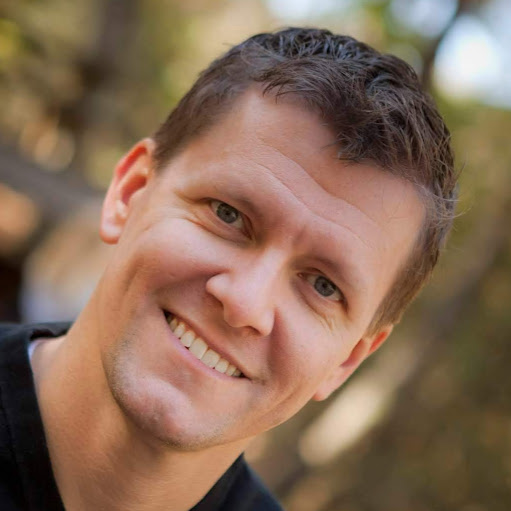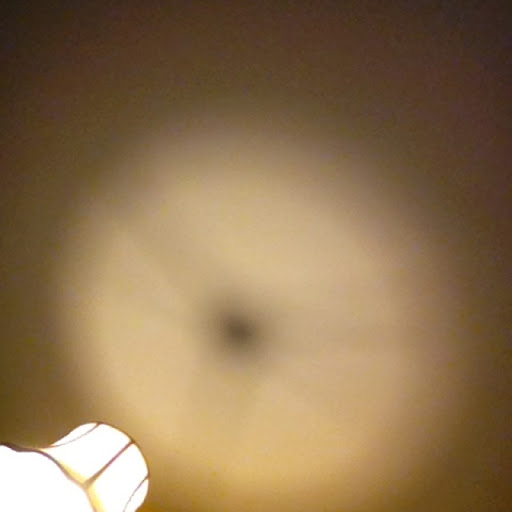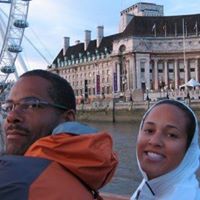David A Randolph
age ~86
from Fairfield, CA
- Also known as:
-
- David G Randolph
- Dave A Randolph
- Phone and address:
-
2986 Blackwell Ct, Fairfield, CA 94533
(707)4221925
David Randolph Phones & Addresses
- 2986 Blackwell Ct, Fairfield, CA 94533 • (707)4221925
- 4009 The Masters Dr, Fairfield, CA 94533
- Denver, CO
- Suisun City, CA
- 312 Bridgeport Ct, Vacaville, CA 95687 • (707)4498708
- Walnut Creek, CA
- Sherman Oaks, CA
Isbn (Books And Publications)

This Is Music: A Guide to the Pleasures of Listening
view sourceAuthor
David Randolph
ISBN #
0887391109

God's Party: A Guide to New Forms of Worship
view sourceAuthor
David James Randolph
ISBN #
0687154456

The Power That Heals: Love, Healing & the Trinity
view sourceAuthor
David James Randolph
ISBN #
0687332079
License Records
David G Randolph
License #:
54.77.1815 - Active
Issued Date:
Sep 15, 1998
Expiration Date:
Jul 1, 2017
Type:
Fire Protection Individual
License #:
54.77.1815/1 - Active
Category:
Fire Alarms/Detection
Issued Date:
Jul 2, 1998
License #:
54.77.1815/2 - Active
Category:
Sprinkler / Standpipe
Issued Date:
Jul 2, 1999
Medical Doctor
Address:
2055 High St SUITE 250, Denver, CO 80205
License #:
51364 - Active
Issued Date:
Jun 6, 2012
Renew Date:
May 1, 2015
Expiration Date:
Apr 30, 2017
Type:
Physician
David Alan Randolph
Address:
2055 High St SUITE 250, Denver, CO 80205
License #:
54211 - Active
Issued Date:
Jun 18, 1990
Renew Date:
Jun 18, 1990
Type:
Engineer Intern
David C. Randolph
Phone:
(513)2718770 (Work)
License #:
25761 - Expired
Category:
Preventive Medicine
Type:
Occupational Med
Name / Title
Company / Classification
Phones & Addresses
Administrator
David J. Randolph
Accounting, Auditing, and Bookkeeping Services
Accounting, Auditing, and Bookkeeping Services
535 Pierce St., Albany, CA 94706
President
Owens Corning Inc
Asphalt Felts and Coatings
Asphalt Felts and Coatings
1501 N Tamarind Ave, Compton, CA 90222
Administrator
Davden Creations
Elementary and Secondary Schools
Elementary and Secondary Schools
P.o. Box 2202, Los Angeles, CA 91337
Manager
Starbucks
Retail Bakeries
Retail Bakeries
303 16Th St Ste 100, Denver, CO 80202
Manager
Starbucks
Retail Bakeries · Snack & Nonalcoholic Beverage Bars · Footwear
Retail Bakeries · Snack & Nonalcoholic Beverage Bars · Footwear
1490 16 St, Denver, CO 80202
934 16 St, Denver, CO 80202
700 16 St, Denver, CO 80202
303 16 St #100, Denver, CO 80202
(720)9043580, (303)4549852, (303)5341096, (303)5756753
934 16 St, Denver, CO 80202
700 16 St, Denver, CO 80202
303 16 St #100, Denver, CO 80202
(720)9043580, (303)4549852, (303)5341096, (303)5756753
Neonatal-perinatal Medicine
Pediatrix Medical
Health/Allied Services
Health/Allied Services
2055 High St, Denver, CO 80205
(303)8323987
(303)8323987
RANDOLPH HOME INSPECTIONS, LLC
David Randolph DDS
Dentists · Oral Surgeons
Dentists · Oral Surgeons
3955 E Exposition Ave, Denver, CO 80209
(303)7779090
(303)7779090
Us Patents
-
Wire-Based Metallization And Stringing For Solar Cells
view source -
US Patent:20220190179, Jun 16, 2022
-
Filed:Dec 6, 2021
-
Appl. No.:17/543438
-
Inventors:- San Jose CA, US
David Aaron Randolph Barkhouse - Oakland CA, US
Douglas Rose - Vista CA, US
Lewis Abra - San Francisco CA, US -
International Classification:H01L 31/05
H01L 31/02
H01L 31/18 -
Abstract:Wire-based metallization and stringing techniques for solar cells, and the resulting solar cells, modules, and equipment, are described. In an example, a substrate has a surface. A plurality of N-type and P-type semiconductor regions is disposed in or above the surface of the substrate. A conductive contact structure is disposed on the plurality of N-type and P-type semiconductor regions. The conductive contact structure includes a plurality of conductive wires, each conductive wire of the plurality of conductive wires essentially continuously bonded directly to a corresponding one of the N-type and P-type semiconductor regions.
-
Laser Assisted Metallization Process For Solar Cell Fabrication
view source -
US Patent:20190312157, Oct 10, 2019
-
Filed:Apr 5, 2019
-
Appl. No.:16/377053
-
Inventors:- San Jose CA, US
Benjamin I. Hsia - Fremont CA, US
David Aaron Randolph Barkhouse - Oakland CA, US
Lewis C. Abra - San Francisco CA, US
George G. Correos - Corralitos CA, US
Boris Bastien - Monte Sereno CA, US -
International Classification:H01L 31/02
H01L 31/18 -
Abstract:A method for fabricating a solar cell and the and the resulting structures, e.g., micro-electronic devices, semiconductor substrates and/or solar cells, are described. The method can include: providing a solar cell having metal foil having first regions that are electrically connected to semiconductor regions on a substrate at a plurality of conductive contact structures, and second regions; locating a carrier sheet over the second regions; bonding the carrier sheet to the second regions; and removing the carrier sheet from the substrate to selectively remove the second regions of the metal foil.
-
Laser Assisted Metallization Process For Solar Cell Stringing
view source -
US Patent:20190312163, Oct 10, 2019
-
Filed:Apr 5, 2019
-
Appl. No.:16/377000
-
Inventors:- San Jose CA, US
Benjamin I. Hsia - Fremont CA, US
David Aaron Randolph Barkhouse - Oakland CA, US
Lewis C. Abra - San Francisco CA, US
George G. Correos - Corralitos CA, US
Marc Robinson - Cedar Park TX, US
Paul W. Loscutoff - Castro Valley CA, US
Ryan Reagan - Hayward CA, US
David Okawa - Redwood City CA, US
Tamir Lance - Los Gatos CA, US
Thierry Nguyen - San Francisco CA, US -
International Classification:H01L 31/0465
H01L 31/049
H01L 31/0475 -
Abstract:Metallization of semiconductor substrates using a laser beam, and the resulting structures, e.g., micro-electronic devices, semiconductor substrates and/or solar cells, solar cell circuit, solar cell strings, and solar cell arrays are described. A solar cell string can include a plurality of solar cells. The plurality of solar cells can include a substrate and a plurality of semiconductor regions disposed in or above the substrate. A plurality of conductive contact structures is electrically connected to the plurality semiconductor regions. Each conductive contact structure includes a locally deposited metal portion disposed in contact with a corresponding one of the semiconductor regions.
-
Laser Assisted Metallization Process For Solar Cell Circuit Formation
view source -
US Patent:20190312166, Oct 10, 2019
-
Filed:Apr 5, 2019
-
Appl. No.:16/377074
-
Inventors:- San Jose CA, US
Benjamin I. Hsia - Fremont CA, US
David Aaron Randolph Barkhouse - Oakland CA, US
David C. Okawa - Redwood City CA, US
David F. Kavulak - Fremont CA, US
Lewis C. Abra - San Francisco CA, US
George G. Correos - Corralitos CA, US
Richard Hamilton Sewell - Los Altos CA, US
Ryan Reagan - Hayward CA, US
Tamir Lance - Los Gatos CA, US
Thierry Nguyen - San Francisco CA, US -
International Classification:H01L 31/05
H01L 31/0224
H01L 31/068
H01L 31/18
H02S 40/34 -
Abstract:A method of fabricating solar cell, solar laminate and/or solar module string is provided. The method may include: locating a metal foil over a plurality of semiconductor substrates; exposing the metal foil to laser beam over selected portions of the plurality of semiconductor substrates, wherein exposing the metal foil to the laser beam forms a plurality conductive contact structures having of locally deposited metal portion electrically connecting the metal foil to the semiconductor substrates at the selected portions; and selectively removing portions of the metal foil, wherein remaining portions of the metal foil extend between at least two of the plurality of semiconductor substrates.
-
Wire-Based Metallization And Stringing For Solar Cells
view source -
US Patent:20190305167, Oct 3, 2019
-
Filed:Mar 29, 2019
-
Appl. No.:16/370422
-
Inventors:- San Jose CA, US
David Aaron Randolph Barkhouse - Oakland CA, US
Douglas Rose - Vista CA, US
Lewis Abra - San Francisco CA, US -
International Classification:H01L 31/05
H01L 31/18
H01L 31/02 -
Abstract:Wire-based metallization and stringing techniques for solar cells, and the resulting solar cells, modules, and equipment, are described. In an example, a substrate has a surface. A plurality of N-type and P-type semiconductor regions is disposed in or above the surface of the substrate. A conductive contact structure is disposed on the plurality of N-type and P-type semiconductor regions. The conductive contact structure includes a plurality of conductive wires, each conductive wire of the plurality of conductive wires essentially continuously bonded directly to a corresponding one of the N-type and P-type semiconductor regions.
-
Conductive Foil Based Metallization Of Solar Cells
view source -
US Patent:20190074400, Mar 7, 2019
-
Filed:Oct 29, 2018
-
Appl. No.:16/174030
-
Inventors:- San Jose CA, US
David Aaron Randolph Barkhouse - Menlo Park CA, US -
International Classification:H01L 31/18
H01L 21/02
H01L 31/05 -
Abstract:Methods of fabricating a solar cell, and system for electrically coupling solar cells, are described. In an example, the methods for fabricating a solar cell can include forming a first cut portion from a conductive foil. The method can also include aligning the first cut portion to a first doped region of a first semiconductor substrate. The method can include bonding the first cut portion to the first doped region of the first semiconductor substrate. The method can also include aligning and bonding a plurality of cut portions of the conductive foil to a plurality of semiconductor substrates.
-
Conductive Foil Based Metallization Of Solar Cells
view source -
US Patent:20180097141, Apr 5, 2018
-
Filed:Sep 30, 2016
-
Appl. No.:15/283249
-
Inventors:- SAN JOSE CA, US
David Aaron Randolph Barkhouse - Menlo Park CA, US -
International Classification:H01L 31/18
H01L 31/05 -
Abstract:Methods of fabricating a solar cell, and system for electrically coupling solar cells, are described. In an example, the methods for fabricating a solar cell can include forming a first cut portion from a conductive foil. The method can also include aligning the first cut portion to a first doped region of a first semiconductor substrate. The method can include bonding the first cut portion to the first doped region of the first semiconductor substrate. The method can also include aligning and bonding a plurality of cut portions of the conductive foil to a plurality of semiconductor substrates.
-
Protective Region For Metallization Of Solar Cells
view source -
US Patent:20180006170, Jan 4, 2018
-
Filed:Jul 1, 2016
-
Appl. No.:15/201324
-
Inventors:- San Jose CA, US
David Aaron Randolph Barkhouse - Menlo Park CA, US
Todd Richards Johnson - San Jose CA, US
Michael Cudzinovic - Sunnyvale CA, US -
International Classification:H01L 31/0224
H01L 31/0216
H01L 31/0236
H01L 31/0232
H01L 31/18
H01L 31/068 -
Abstract:Methods of fabricating a solar cell including metallization techniques and resulting solar cells, are described. In an example, a first and second semiconductor regions can be formed in or above a substrate, where a separation region is disposed between the first and second semiconductor regions. A protective region can be formed over the separation region. A first metal layer can be formed over the substrate, where the protective region prevents and/or inhibits damage to the separation region during the formation of the first metal layer. Conductive contacts can be formed over the first and second semiconductor regions.
Medicine Doctors

Dr. David A Randolph - MD (Doctor of Medicine)
view sourceSpecialties:
Neonatal Medicine
Perinatal Medicine
Perinatal Medicine
Procedures:
Sonography
Conditions:
Dementia
Certifications:
Pediatrics, 2003
Perinatal Medicine & Neonatal Medicine, 2008
Perinatal Medicine & Neonatal Medicine, 2008
Awards:
Healthgrades Honor Roll
Languages:
English
Hospitals:
Pediatrix/Obstetrix Medical Group of CO
1601 E 19Th Ave Suite 5300, Denver, CO 80218
Pediatrix Medical Group
2055 High St Suite 250, Denver, CO 80205
Swedish Medical Center
501 East Hampden Avenue, Englewood, CO 80113
Avista Adventist Hospital
100 Health Park Drive, Louisville, CO 80027
1601 E 19Th Ave Suite 5300, Denver, CO 80218
Pediatrix Medical Group
2055 High St Suite 250, Denver, CO 80205
Swedish Medical Center
501 East Hampden Avenue, Englewood, CO 80113
Avista Adventist Hospital
100 Health Park Drive, Louisville, CO 80027
Education:
Medical School
University of Washington
Medical School
University Of California (San Francisco)
Medical School
Stanford Hospital and Clinics
University of Washington
Medical School
University Of California (San Francisco)
Medical School
Stanford Hospital and Clinics

Dr. David R Randolph, Centennial CO - DDS (Doctor of Dental Surgery)
view sourceSpecialties:
Dentistry
Address:
8207 S Newport Ct Suite 505, Centennial, CO 80112
(303)7779090 (Phone), (303)7772822 (Fax)
(303)7779090 (Phone), (303)7772822 (Fax)
Languages:
English

David M. Randolph
view sourceSpecialties:
Radiation Oncology
Work:
Johnston-Willis Medical Center Radiation Oncology
1401 Johnston Willis Dr, Richmond, VA 23235
(804)3302164 (phone), (804)3302325 (fax)
1401 Johnston Willis Dr, Richmond, VA 23235
(804)3302164 (phone), (804)3302325 (fax)
Education:
Medical School
Eastern Virginia Medical School Medical College
Graduated: 1983
Eastern Virginia Medical School Medical College
Graduated: 1983
Languages:
English
Description:
Dr. Randolph graduated from the Eastern Virginia Medical School Medical College in 1983. He works in Richmond, VA and specializes in Radiation Oncology. Dr. Randolph is affiliated with Johnston-Willis Hospital.

David Charles Randolph M.P.H.
view sourceSpecialties:
General Practice
Occupational Medicine
Occupational Medicine
Education:
The Ohio State University(1975)

David Alan Randolph, Birmingham AL
view sourceSpecialties:
Neonatal-Perinatal Medicine Specialist
Address:
619 19Th St S, Birmingham, AL 35249
2055 High St, Denver, CO 80205
2055 High St, Denver, CO 80205

David Robert Randolph, Lone Tree CO
view sourceSpecialties:
Dentist
Address:
10047 Park Meadows Dr, Lone Tree, CO 80124
7120 E County Line Rd, Littleton, CO 80126
7120 E County Line Rd, Littleton, CO 80126
Resumes

David Randolph
view sourceLocation:
United States

Neonatologist At Rocky Mountain Hospital For Children
view sourcePosition:
Neonatologist at Rocky Mountain Hospital for Children
Location:
Greater Denver Area
Industry:
Hospital & Health Care
Work:
Rocky Mountain Hospital for Children - Greater Denver Area since 2012
Neonatologist
University of Alabama in Birmingham 2007 - 2012
Assistant Professor of Pediatrics
Neonatologist
University of Alabama in Birmingham 2007 - 2012
Assistant Professor of Pediatrics
Education:
Stanford University School of Medicine 2004 - 2007
Fellowship, Neonatology University of California, San Francisco - School of Medicine 2000 - 2003
Residency, Pediatrics Washington University in St. Louis School of Medicine 1992 - 2000
MD, PhD, Immunology University of Colorado at Boulder 1986 - 1990
BS, Chemical Engineering
Fellowship, Neonatology University of California, San Francisco - School of Medicine 2000 - 2003
Residency, Pediatrics Washington University in St. Louis School of Medicine 1992 - 2000
MD, PhD, Immunology University of Colorado at Boulder 1986 - 1990
BS, Chemical Engineering
Skills:
Immunology
Hospitals
Molecular Biology
Cell Culture
Cell Biology
Animal Models
Cell
Flow Cytometry
Translational Research
Cancer
Lifesciences
Biochemistry
Hospitals
Molecular Biology
Cell Culture
Cell Biology
Animal Models
Cell
Flow Cytometry
Translational Research
Cancer
Lifesciences
Biochemistry
Myspace

David Randolph
view sourceGoogleplus

David Randolph
Work:
Motorola Mobility - Software engineer (1999)
Education:
University of Illinois at Chicago - Computer Science, University of Colorado at Boulder - Computer Science

David Randolph
Work:
360i - VP, Retail (2006)
Education:
Pennsylvania State University

David Randolph
Work:
Realty Rennovators - Head Assistant (2010)
Education:
Truman State University - Political Science and Business

David Randolph
Work:
JCL Realty, Inc - Front Desk
Bill Eads RVs - Online Sales
Bill Eads RVs - Online Sales
Tagline:
I'm David :)

David Randolph
Work:
Kroger - Grocer 2nd in command (8)

David Randolph
Education:
Pepperdine University

David Randolph

David Randolph
Flickr
Plaxo

David Randolph
view sourceHermitage, TNFleet Manager at Long Foundation Drilling Co.

David Randolph
view sourceRoyal Free Hospital NHS Trust

David Randolph
view sourceBusiness Systems Analyst at MetLife
Classmates

David Randolph
view sourceSchools:
Pioneer High School Clare MI 1989-1993
Community:
Tammy Hamilton, Nicholas Read

David Randolph
view sourceSchools:
Windover High School Midland MI 1994-1996
Community:
Jerry Yates

David Randolph
view sourceSchools:
Our Lady of Sorrows High School Farmington MI 1957-1961
Community:
Reg Brown, Virginia Bohme, Jerry Marszalek

David Randolph (Devorchic)
view sourceSchools:
Buckeye Local High School Tiltonsville OH 2004-2008
Community:
Kelly Casey, Willard Hanson

David Randolph
view sourceSchools:
Jones Elementary School Orange TX 1963-1968, Anderson Elementary School Orange TX 1967-1968, M.B. North High School Orange TX 1968-1970
Community:
Ron Linscomb, Nora Paul, Connie Ferris

David Randolph
view sourceSchools:
Peacock Military Academy San Antonio TX 1961-1963
Community:
Jorge Schlesinger, Paul Mantle

David Randolph
view sourceSchools:
Elk Grove High School Elk Grove CA 1970-1974
Community:
Christina Wilson

David Randolph
view sourceSchools:
Self High School Irvine CA 1994-1998
Community:
Ernestine Sesmas
Youtube

David Dreadhead Randolph
view source
David Randolph Sr.
view source
David Randolph Sr.
view source
David Wilson Randolph
view source
David Allen Randolph
view source
David Daniel Randolph
view source
David Ray Randolph
view source
David E. Randolph
view sourceGet Report for David A Randolph from Fairfield, CA, age ~86


















